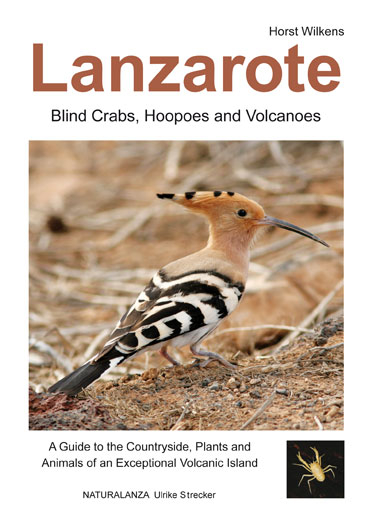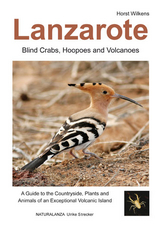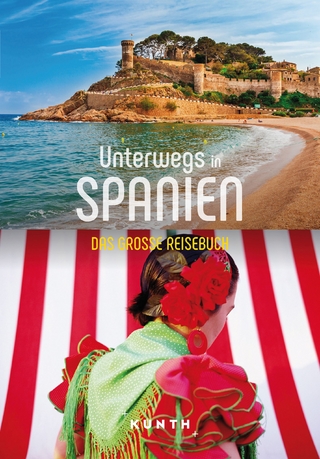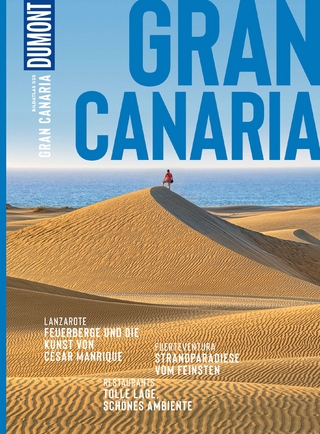Lanzarote - Blind Crabs, Hoopoes and Volcanoes
NATURALANZA (Verlag)
978-3-942999-02-1 (ISBN)
- Titel nicht im Sortiment
- Artikel merken
The blind and white crabs were scientifically studied by Professor Dr. Horst Wilkens (University of Hamburg, Germany) since many years. In this beautifully illustrated guide he explains the way how these deep see animals colonised the Jameos del Agua and could survive here. The author also describes the unique fauna and flora of Lanzarote which has adapted to the bizarre volcanic landscapes of Lanzarote. Many of the animals and plants exclusively exist on this island. The guide also gives proposals for trips where they can be observed.
Dr. Horst Wilkens is a Professor at the University of Hamburg. His research focuses on the evolution of cave dwelling animals, and speciation processes. His work includes studies of two of Lanzarote’s ecosystems, the “Jameos del Agua”, and the “Túnel de la Atlántida”, as well as of the biology of the here occurring animal species. The knowledge of the fauna and flora of Lanzarote acquired in connection with these studies was the basis for this nature guide.
Table of Contents
Lanzarote, island of volcanoes – an introduction.6
Geography and climate.8
Islands – focal points of evolution.10
Habitats
El Jable – the power of the sands.12
Agriculture.20
Risco de Famara - isla ecológica.22
Barrancos – remaining wilderness.27
Malpaís de la Corona.34
Ascent to the crater of Monte Corona.36
The lava tunnel of the Malpaís de la Corona.40
Jameos del Agua – a window to the deep sea.43
Túnel de la Atlántida – a biological treasure trove.50
Timanfaya National Park – a moonscape comes to life.52
Rocky shores, lagoons and saltpans.56
Plants and Animals
Lichens – the power of unity.60
Treasure of the “Purple Islands”.62
Parasites – life at the expense of others.64
Food web of the Opuntia field.68
Darkling beetles – animals of the desert.71
The end of the blue flotilla.72
Life among breakers.76
Bivalves, snails and cuttlebones.79
Fruits of the sea.83
Characteristic birds of the island.86
Masters of disguise.90
Of migrants, winter residents and accidental visitors.94
Birds of lagoons, salterns and rocky shores.97
A sea view – gulls, terns and pardelas.98
A flea brought it to light.99
Lanzarote – isla ecológica?.102
Suggested trips.107
César Manrique Today’s Lanzarote is unthinkable without César Manrique (1919 - 1992). The internationally renowned artist was born and also died here. He viewed his work holistically, and saw himself in a wider, non-specific context as an ecologist. Everywhere on the island, his influence is apparent: the Castillo San José in Arrecife, the monument „Monumento al Campesino“ in the geographic centre of the island, the Mirador del Río at the Northern sheer cliff, the Jameos del Agua, and the restaurant El Diabolo on the Islote del Hilario in the Montañas del Fuego are all examples. They are all witness to the gentle ecological accessibility of nature to man, which was the aim of the artist. César Manrique had a lasting impact on the planning policies of a whole island. No multi-storey buildings were developed on Lanzarote. For a long time, it was possible to protect the island from over-development, by building specific housing complexes for tourists. Even to this day, the abovementioned sights lack the typical cheap souvenir stalls, which would distract from the locations’ artistic aura. The artist used a predominantly cubic style of architecture, whitewashed walls, green doors and window frames. These also became popular with private builders, and thus gave the island its own typical stamp. He designed the artistic wind sculptures that can be found on crossroads here, and which distract from the shallow functionalism of the traffic junctions. César Manrique himself lived the union between man and nature on Lanzarote. His own dwelling was erected in characteristic cubic shape, above the seven volcanic bubbles of a black lava stream near Tahiche, which he integrated into his living space. A visit to Lanzarote is incomplete without a trip to the Fundación César Manrique. It most impressively presents the spirit of Manrique’s work. Perhaps singularly in the world, César Manrique has achieved to transform a whole island into an all-inclusive piece of art. In this context it is notable, that he succeeded to artistically intermix the given inanimate geological, and the animate biological nature, with ecology and the intellectual nature of man.
| Zusatzinfo | about 160 colour photos and figures |
|---|---|
| Verlagsort | Hamburg |
| Sprache | englisch |
| Original-Titel | Lanzarote - Blinde Krebse, Wiedehopfe und Vulkane |
| Maße | 130 x 185 mm |
| Gewicht | 190 g |
| Einbandart | Paperback |
| Themenwelt | Bildbände ► Europa ► Spanien |
| Reisen ► Sport- / Aktivreisen ► Europa | |
| Naturwissenschaften | |
| Schlagworte | animals • animals and plants • Canaries • Canary Islands • Guide • Hiking • Lanzarote • Nature • plants |
| ISBN-10 | 3-942999-02-1 / 3942999021 |
| ISBN-13 | 978-3-942999-02-1 / 9783942999021 |
| Zustand | Neuware |
| Haben Sie eine Frage zum Produkt? |
aus dem Bereich




